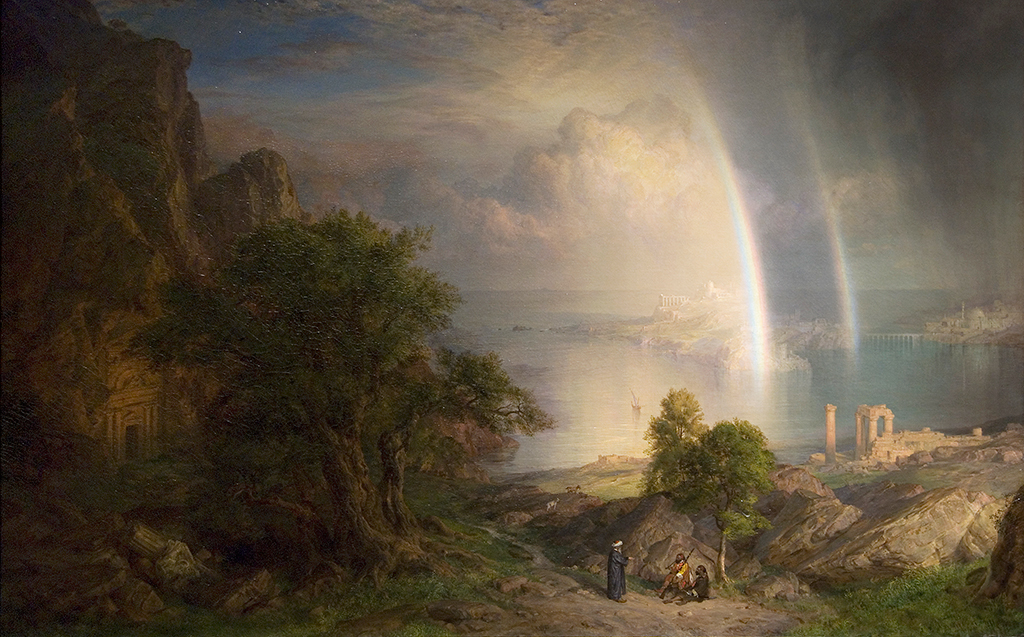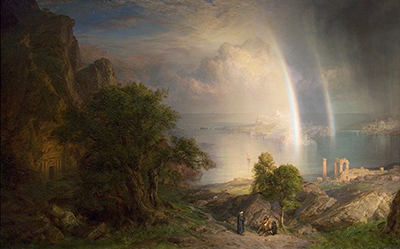The Aegean Sea is an oil on canvas painting that American painter Frederic Edwin Church did in 1877. It's a composite landscape piece that Church sold to his friend, William H. Osborn, a railway tycoon.
When his wife died, Osborn gifted the artwork to the Metropolitan Museum of Art. Between 1867 and 1869, the artist toured Europe and the Middle East, taking photographs and sketches of locations that he found interesting. Church based the painting on these sketches.
A Fantasy Landscape
Church used the Capriccio style for the painting. In this dream landscape, ruins of the fallen capitals from Baalbek's Temple of Bacchus sit on the lower left of the painting. Slightly higher is the entrance to the city of Petra in carved rock. On the right section of the artwork, just beyond a few large rocks, are the Roman columns of Syria. A body of water separates the columns from what appear to be the ruins of the Acropolis of Athens. Across from that, are a dome and minaret, supposedly in Istanbul. A bridge connects the ruins of the Acropolis and the Turkish mosque.
Back to the foreground, are three men who appear to be resting under a tree. There are two are sitting while the third is standing before them, gesturing as if explaining something. Two animals, perhaps goats, are standing on a boulder, looking over at the green, fertile valley below. A double rainbow lights up the gloomy sky and descends to hit the body of water in perfect harmony.
Capriccio Art
Capriccio is a style of art where the artist applies architectural fantasy to create an ideal background. It involves putting together several architectural elements such as buildings and ruins in a fictional manner. In some instances, it can include figures. It is a form of landscape painting where the painter uses a dreamlike interpretation. The level of re-imagining depends on what the artist is trying to achieve. Church was famous for a naturalistic approach to his artwork. However, in this piece, he opts for an idealised style.
Restoration of Faith
In The Aegean Sea, Church blended different worlds to create one harmonious setting. He aligned the architectural aspects to make them resemble a real location. Church included a spiritual dimension in most of his artwork, and in this painting, it is the mosque. The Old World sites were a sort of confirmation for Church about his beliefs. During the time he did this painting, the artist faced challenges to his faith due to the technological advances that were slowly taking place.
The Aegean Sea is among the last large-scale pieces by Church. It measures 54 x 84.25 inches. J.M.W Turner is one of the inspirations that Church had when working on this painting. His use of light and other atmospheric elements has a touch of William Turner. Church became familiar with the work of the English Romantic painter in London in 1869. The American artist was part of the Hudson River art movement, learning the style from Thomas Cole.





